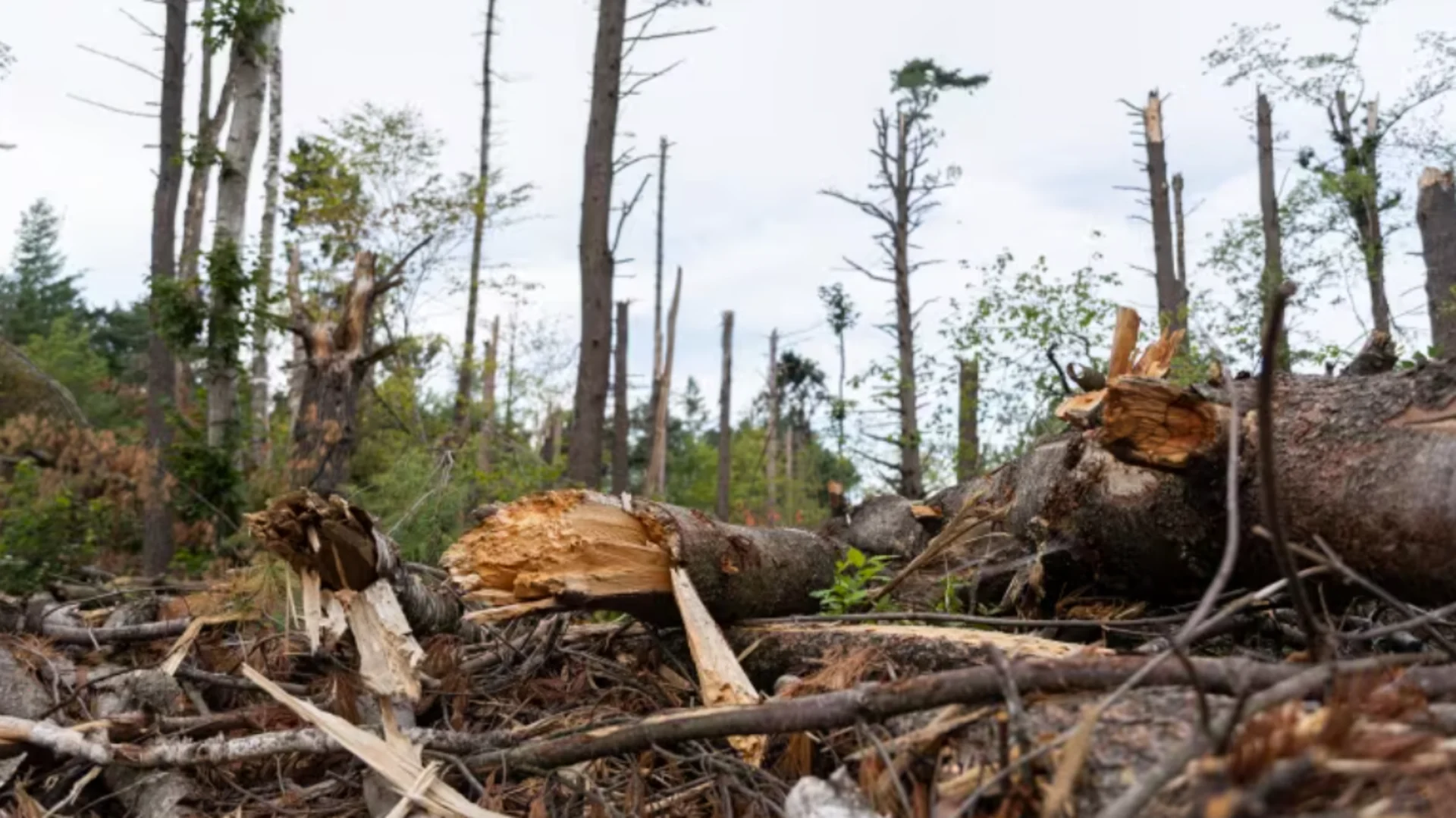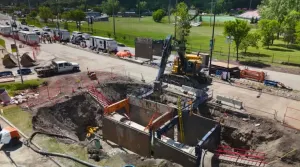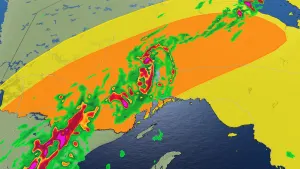
2 years after devastating derecho, reforestation program takes root
Two years after a destructive derecho tore across eastern Ontario, one of the hardest-hit areas is taking the next step toward revitalizing its forests: planting new trees to replace the ones destroyed in the storm.
The derecho struck the region on May 21, 2022, bringing winds of up to 190 km/h. Hydro Ottawa said the storm knocked out more than 500 hydro poles, leaving thousands in the capital without power for days.
The violent storm also downed innumerable trees, particularly softwood species such as red and white pine.
Last year, various levels of government joined the South Nation Conservation Authority east of Ottawa to develop a forest recovery program to address the severe damage. (The conservation authority covers a vast swath from the Ottawa River south to near Brockville, and from the capital's eastern edge to near Alexandria, encompassing 16 separate municipalities.)
SEE ALSO: If Canada's tornado alley is shifting east, how can we better prepare?
The program they came up with targets private woodlots that were caught within the storm's path. Property owners outside that area but within either the conservation authority's jurisdiction or the City of Ottawa are eligible to apply.

This map shows the derecho's path of destruction on May 21, 2022. (CBC)
The first stage of the recovery plan focused on trees deemed to be at "high risk of falling." Now the conservation authority is starting to replace them.
A derecho is a fast-moving thunderstorm known for causing widespread wind damage. Unlike the rotating winds in a hurricane or tornado, a derecho's winds blow straight.
Caroline Goulet, a forester with the conservation authority, said the derecho was not "consistent in regards to the way and the type of force that it hit."
"I walked just over 140 properties of owners that applied to the [tree replacement] program, and they're all very different," she said. "So just imagine the type of puzzle that we're dealing with."

Caroline Goulet, left, and Ian Walker, right, assess the damage done to the forest at Mariposa Farm in Plantagenet, Ont. (Radio-Canada)
This variability has made the recovery process more complex, requiring a tailored approach for each property.
Goulet said the program has already planted 26,000 trees on properties affected by the derecho, and plans to plant another 36,000 to 46,000 this fall. This often involves clearing debris left behind during the first stage of the revitalization.
"The delay of response for the woodlot storm recovery program was long and landowners were frustrated and they were wondering, will we ever even get help? So I get that 100 per cent," Goulet said.
Forest 'massacred' by storm
Ian Walker, owner of Mariposa Farm and a councillor with the Township of Alfred and Plantagenet, said his forest was "massacred" by the derecho.
"It was a hemlock forest of about 100 trees," Walker said. "Right now there's not very many hemlocks left here. I think there's less than five."

Jean Saint-Pierre, president of Boisés Est, an association representing private woodlot owners, studies a tree uprooted by the derecho. (Radio-Canada)
Walker said he avoided the forest for the first two months after the storm.
"I could see from the road that it was very damaged, but I just didn't have the heart to come in the forest," he said.
Eventually, he ventured into the woods and took a video of the damage.
"All the trees were horizontal," he recalled.
Calls for a quicker response
Jean Saint-Pierre, president of Boisés Est, an association representing private woodlot owners, said it's crucial to document the recovery process to improve response times.
DON'T MISS: Nearly all of Quebec in high fire risk after hot, dry start to June
Saint-Pierre called for timely assistance to support their efforts.
"The funding was much appreciated, but it took a long time before we had news that it would be available," he said.
Other destructive weather events such as the 1998 ice storm were met with a faster response, Saint-Pierre said.
"Within two months [of the ice storm], there was a significant amount of dollars allocated," he said.
Goulet suggested a more permanent solution.
"Having a program dedicated to response to extreme weather events would be something that I could see being beneficial for the long term," she said.
"Always having that program in the back end of things just to be ready to help landowners right away ... would be amazing."
Thumbnail image credit to Alexander Behne/CBC.
This article, written by Faith Greco, was originally published for CBC News, with files from Radio-Canada.









